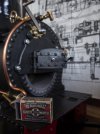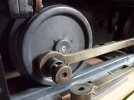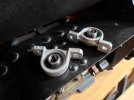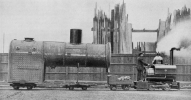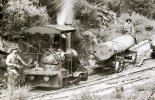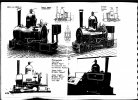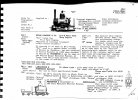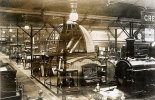Peter Insole
Western Thunderer
Last night I successfully managed to sort out the regulator friction - or rather the lack of - problem!
A very pleasant drive out in the afternoon sunshine with Rich to visit our local model shop and some other places for both "inspiration" and acquisition of materials, yielded amongst other things, this handy pack of various O rings...
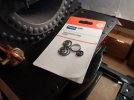
I am afraid that I forgot to take any photo's of the simple process, so a description will have to suffice.
The stuffing box/packing gland has a plain brass tube and bore running through from front to flush with the back, and the whole assembly is fitted over four, fixed M3 studs. After removing the complete unit, it was a straightforward job to shave a rebate in the wooden backhead with a countersink bit - just enough to trap and slightly squeeze one of the appropriate size O rings onto the regulator rod when the box was screwed back down.
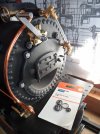
I have no idea how long those O rings will survive, whether in hard service or simply perishing naturally, but at least replacement should not be that much of a deal?
Whatever; for the time being the regulator needs a wee bit more deliberate effort than a mere feather light touch to open and close!
Now that job is finally sorted; it is back to Mr. T's special wagon wheels for today!
Pete.
A very pleasant drive out in the afternoon sunshine with Rich to visit our local model shop and some other places for both "inspiration" and acquisition of materials, yielded amongst other things, this handy pack of various O rings...

I am afraid that I forgot to take any photo's of the simple process, so a description will have to suffice.
The stuffing box/packing gland has a plain brass tube and bore running through from front to flush with the back, and the whole assembly is fitted over four, fixed M3 studs. After removing the complete unit, it was a straightforward job to shave a rebate in the wooden backhead with a countersink bit - just enough to trap and slightly squeeze one of the appropriate size O rings onto the regulator rod when the box was screwed back down.

I have no idea how long those O rings will survive, whether in hard service or simply perishing naturally, but at least replacement should not be that much of a deal?
Whatever; for the time being the regulator needs a wee bit more deliberate effort than a mere feather light touch to open and close!
Now that job is finally sorted; it is back to Mr. T's special wagon wheels for today!
Pete.

